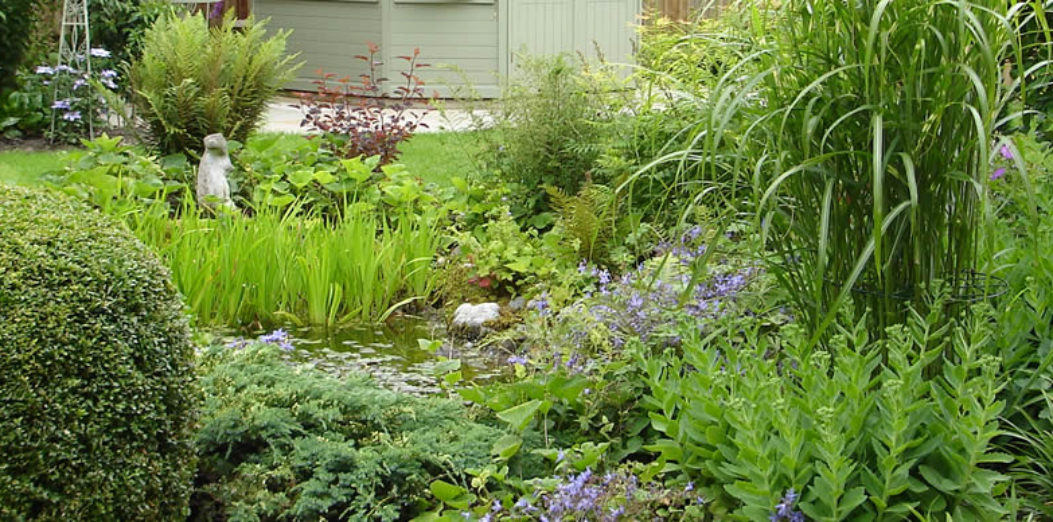Plant Spacing – The Garden Designer’s Dilemma

Clients often ask me how I know how far apart to space plants when designing a new planting scheme. And the answer is often “with difficulty”!
Many clients these days want an instant garden, with borders brimming full of plants on day 1. But the danger here is that the same garden will be a jungle a year or two later, with clients struggling to keep the garden under control and some of the nicest plants being suffocated by stronger growing neighbours.
At the other extreme, some clients live in fear of over-planting their new garden. They have diligently read all the expert guides and found out that shrub x has an ultimate height and spread of 3-4+m and refuse to countenance having the plant in their garden. Of course, what many of these expert guides don’t tell the client is how long the plant will take to reach its “ultimate” size – it might be 50+ years, and even then no shrub actually stops growing.
So, perhaps part of my job as a garden designer is to set some realistic client expectations, and to be honest in terms of how plants will grow over time, and what actions my clients may need to take.
Perennials? No problem. Shrubs? Hmm…
In general terms (and ok, I know this is a sweeping generalisation), we know what we are dealing with in terms of perennials. They normally perform up to almost full potential in year 1, and will continue doing so. Some might need dividing or thinning out if they spread too much, but it’s no big deal.
But shrubs? They’re a different kettle of fish.
Planted at normal garden centre size, they will take a few years to begin to really get going, and will need space left around them to allow them to develop, something many people don’t like – either because the garden looks too bare (and/or they are impatient!), or because the empty spaces are easily invaded by weeds.
One solution is to buy some of the important planting scheme shrubs at bigger sizes. This of course is more costly, so would normally just involve the shrubs needed for structure, impact or screening – unless the client has an unusually large budget and/or is unusually impatient!
Another solution is to plant some (relatively inexpensive) short term infill plants as “sacrificial lambs” – small plants intended to fill gaps in the short term, but which will ultimately die out as the shrubs grow up and swamp them. The problem is that in many gardens, over time a great many plants not intended as sacrificial lambs end up becoming just that – because shrubs are left completely to their own devices and slowly take over more than their allotted space. Invariably it is the perennials and smaller shrubs – the plants that provide so much of the flower colour in a garden – that end up being lost.
So the reality in all gardens (particularly if the retention of flower colour is required) is that as the garden matures, eventually some form of shrub control will be needed – be it pruning or even the removal of entire plants. This is inevitable when dealing with a living, growing thing, but not perhaps something clients want to hear when I present them with a planting plan!
My rule of thumb
When designing planting schemes I am normally aiming for the garden to look nice in year 1 – with flower colour, and the promise of things to come – the foliage tapestry effect will be there, but only just showing. By years 3-5 the garden should be looking splendid, but already by then (and certainly thereafter), some action will be needed to keep things under control.
So when spacing plants, we know how big perennials get, and by checking out the expert guides, we can get a feel for how large a plant will be in 3, 5, 10+ years, and this is the information I use when judging how far apart to space plants. I may decide I need to squeeze in a few more plants, or plant a few sacrificial lambs, or buy bigger plants – much depends on the what the client wants. But ultimately, if the shrubs aren’t controlled, one day someone will need to get out a machete. Just don’t blame me – I’m just a humble garden designer… honest!